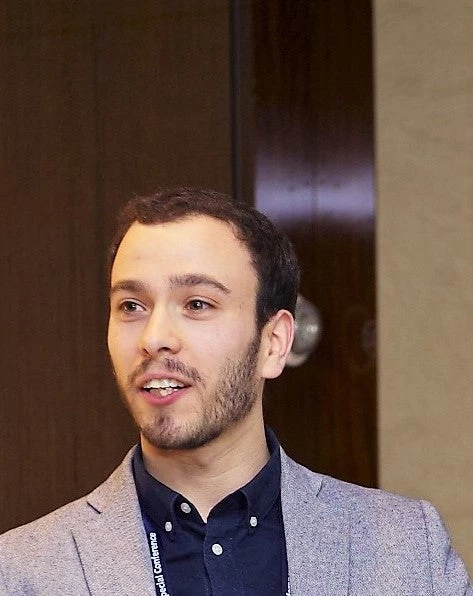 Inequality of opportunity in Sub-Saharan Africa is more pronounced than previously estimated. | © Marek Studzinski / Unsplash
Inequality of opportunity in Sub-Saharan Africa is more pronounced than previously estimated. | © Marek Studzinski / Unsplash
Inequality is a pressing issue in Sub-Saharan Africa, where poverty rates are high and economic growth is slowing. One aspect of inequality that has gained attention is inequality of opportunity (IOp) which refers to the inequality that is due to circumstances beyond a person’s control, such as their place of birth, parents’ education, religion, and ethnicity. In addition to being morally undesirable, this type of inequality is detrimental to economic growth because it favors economic success by those with certain inherited characteristics rather than those with talent and determination. Understanding the extent and sources of IOp is crucial for addressing income inequality and promoting inclusive growth in the region. However, previous studies on IOp in Sub-Saharan Africa have been limited in scope and data availability.
Understanding Inequality of Opportunity
In a recent research paper titled "New Evidence on Inequality of Opportunity in Sub-Saharan Africa," we shed light on the extent and drivers of inequality of opportunity in the region. The study, which covers 18 countries in Sub-Saharan Africa, the largest sample to date and using the latest surveys available, updates and extends valuable insights into the factors that contribute to inequality and hinder economic growth. Our research reveals that inequality of opportunity in Sub-Saharan Africa is more pronounced than previously estimated. In this blog, we summarize the key findings of the research and discuss their implications for policy making and development efforts in the region.
Method
To measure IOp, we follow Brunori et al. (2023) and use an innovative machine learning algorithm based on decision trees. In short, the algorithm iteratively divides each country’s sample into groups of birth characteristics that best explain consumption inequality. For example, in Senegal, the algorithm first identifies being born in Dakar as the birth characteristic that most predicts consumption. Among those from Dakar, it then splits the sample based on whether the father completed tertiary schooling, while among those not from Dakar, it splits the sample into those who were born in a rural or urban area. This process continues until there are no more birth characteristics that significantly predict consumption. The most prosperous group of people are born in Dakar and have a father who completed tertiary schooling, while the least prosperous group is from a rural area, in a specific list of regions, and from a specific list of ethnic groups. We can use this “tree” to calculate the share of inequality that can be explained by birth characteristics, as well as the specific role that each birth characteristic plays in explaining inequality in each country. This method minimizes bias relative to previous methods, and it avoids arbitrary researcher decisions by letting the data speak for itself.
Key Findings
The results reveal that birth characteristics account for over half of consumption inequality. This means that factors such as birthplace, parents' education, and ethnicity play a significant role in determining economic opportunities. On average, IOp explains 54 percent of consumption inequality in the region, with estimates typically ranging from 40 to 60 percent across countries. South Africa stands out with the highest IOp at 74 percent, followed by Burkina Faso and Benin. In contrast, Ethiopia has the lowest IOp at 26 percent.
The paper also provides a breakdown of the importance of each birth characteristic in explaining inequality. Birthplace, parents' education, and ethnicity are identified as the most significant contributors to consumption disparities in most countries. However, there is variation in the importance of characteristics across countries. While race plays an outsized role in South Africa, father’s education is highly important in Malawi. These variations highlight the unique challenges that each country faces in addressing IOp.
Implications for Policy
The findings call for policy makers to prioritize equal opportunity, which will require targeting interventions at various life stages. For youth, this includes investing in quality education and skills development programs, particularly for women and disadvantaged youth. For adults, it requires enforcing labor standards, eliminating discriminatory labor laws, and promoting equal access to employment opportunities. It also may include progressive fiscal policies to increase wealth redistribution and targeted social assistance programs for vulnerable populations. Agricultural and environmental reforms such as reducing fertilizer subsidies and promoting sustainable agriculture practices can improve livelihoods in rural areas with depressed agriculture. Each of these reforms can help level the playing field and provide equal opportunities for all individuals.
Conclusion
Our research reveals that inequality of opportunity in Sub-Saharan Africa is more pronounced than previously estimated, with inherited birth characteristics explaining more than half of inequality in the region. Policy makers must intensify efforts to invest in equal opportunities at all stages of the lifecycle, to create a more equitable society and to unlock the region's full potential for growth.





Join the Conversation